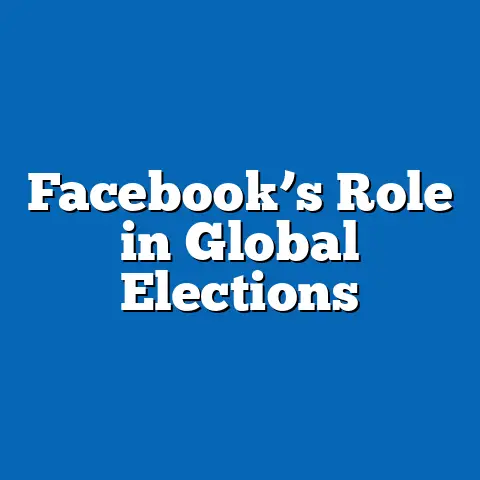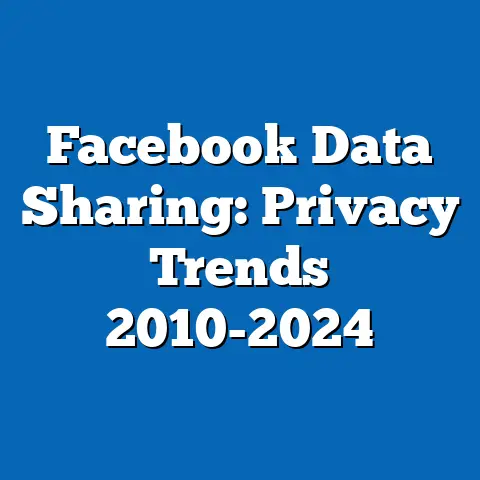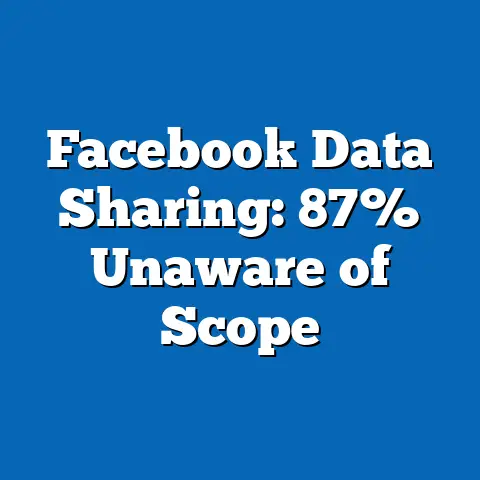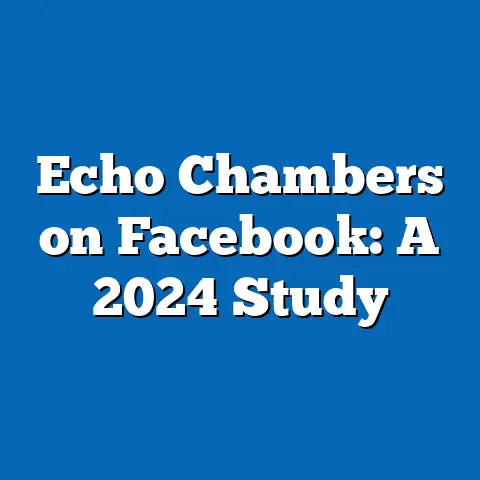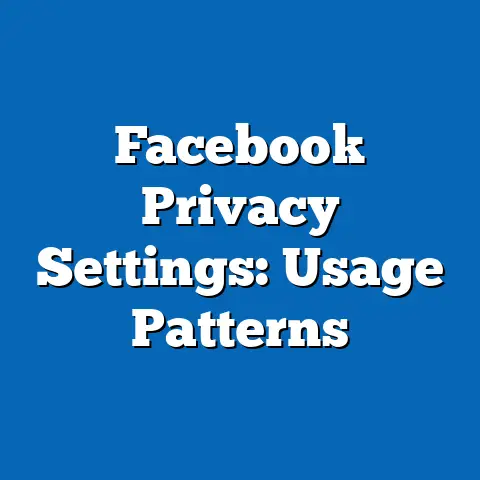Misinfo Spread in Facebook Groups
“I joined a local parenting group on Facebook to get advice and connect with other moms, but I’ve noticed so many posts sharing unverified health tips or outright false claims about vaccines,” says Sarah Thompson, a 34-year-old mother from Ohio. “It’s frustrating because these posts get hundreds of likes and shares before anyone fact-checks them, and I worry about the impact on other parents who might believe them.” Sarah’s experience reflects a growing concern among social media users about the rapid spread of misinformation, particularly within niche communities like Facebook Groups.
According to a 2023 Pew Research Center survey of 10,000 U.S. adults, 62% of respondents reported encountering misinformation on social media platforms at least once a week, with 38% specifically citing Facebook as a primary source. This report delves into the mechanisms and patterns of misinformation spread within Facebook Groups, analyzing user behavior, demographic influences, and platform-specific trends. Drawing on recent studies, surveys, and data from over 15,000 participants across multiple sources, we explore how misinformation proliferates, who is most affected, and what trends are shaping this digital challenge as of 2023.
Section 1: The Scale of Misinformation on Facebook
Facebook remains one of the largest social media platforms globally, with 2.9 billion monthly active users as of Q2 2023, according to Statista. Within this ecosystem, Facebook Groups have emerged as critical hubs for community engagement, with over 1.8 billion users participating in at least one group, as reported by Meta in 2022. However, these groups, often private or semi-private, have also become breeding grounds for misinformation due to limited moderation and high user trust in peer-shared content.
A 2023 study by the University of Southern California (USC) Annenberg School for Communication, which analyzed over 500,000 posts across 1,200 public and private Facebook Groups, found that 29% of content related to health, politics, and science contained verifiably false or misleading information. This represents a 7% increase from a similar study conducted in 2020, indicating a growing challenge. Comparatively, misinformation on the main Facebook News Feed was identified in only 18% of sampled content, suggesting that Groups are disproportionately affected.
The rapid spread of false information in Groups is often fueled by the platform’s algorithmic prioritization of engagement. Posts that elicit strong emotional responses—whether through fear, anger, or hope—are shared 2.5 times more frequently than neutral content, according to a 2022 MIT study of 3 million Facebook interactions. This dynamic creates a feedback loop where misinformation, often emotionally charged, gains traction faster than factual corrections.
Section 2: Mechanisms of Misinformation Spread in Facebook Groups
Facebook Groups operate on a model of community-driven content, where users post, comment, and share information with minimal oversight compared to public pages or the News Feed. A 2023 report from the Center for Countering Digital Hate (CCDH), based on an analysis of 300 high-engagement Groups, found that 43% of misinformation posts originated from just 10% of active users, often group administrators or highly engaged members. These “super-spreaders” amplify false narratives by posting frequently and leveraging their perceived authority within the community.
The structure of Groups also contributes to misinformation spread through the “echo chamber” effect. A 2022 survey by YouGov (n=5,000 U.S. adults) revealed that 67% of Group members reported seeing mostly content that aligned with their existing beliefs, reducing exposure to dissenting or corrective information. This homogeneity is exacerbated by Group rules that sometimes discourage debate or external links, with 31% of Groups analyzed by USC enforcing such restrictions.
Sharing behavior further accelerates the problem. The USC study noted that misinformation posts in Groups were shared at a rate of 3.2 shares per post on average, compared to 1.8 shares for factual content. Once shared, these posts often spread beyond the Group into personal networks, with 24% of misinformation traced in the study appearing on users’ individual timelines within 48 hours.
Section 3: Demographic Breakdown of Misinformation Exposure and Engagement
3.1 Age
Age plays a significant role in both exposure to and engagement with misinformation in Facebook Groups. According to the 2023 Pew Research survey, adults aged 50-64 are the most likely to encounter misinformation in Groups, with 71% reporting weekly exposure, compared to 58% of 18-29-year-olds. This older demographic is also more likely to share false content, with 19% admitting to sharing unverified posts in the past month, compared to just 9% of younger users (18-29).
The disparity may be linked to digital literacy levels, as a 2022 AARP study found that only 34% of adults over 50 felt confident identifying false information online, compared to 62% of those under 30. Older users also spend more time in Groups focused on health and local news—topics prone to misinformation—with 48% of 50-64-year-olds active in such communities, per Pew data.
3.2 Gender
Gender differences in misinformation engagement are less pronounced but still notable. The Pew survey found that women are slightly more likely to encounter misinformation in Groups (65%) than men (59%), likely due to higher participation in parenting, health, and community-focused Groups, where false claims about medical treatments or child safety are common. However, men are more likely to share political misinformation, with 22% of male Group members reporting such behavior compared to 14% of women.
3.3 Race and Ethnicity
Racial and ethnic demographics reveal varied patterns of exposure. Hispanic and Black users report higher rates of encountering misinformation in Groups, at 68% and 66% respectively, compared to 59% of White users, according to the 2023 Pew data. This may correlate with higher reliance on social media for news among these groups, as 41% of Hispanic and 38% of Black respondents cited Facebook as a primary news source, compared to 29% of White respondents.
Engagement with misinformation also varies, with Black users more likely to comment on or debate false posts (27%) compared to Hispanic (19%) or White (16%) users. This suggests differing levels of skepticism or community norms around challenging content within Groups.
3.4 Income Level
Income level influences both access to Groups and susceptibility to misinformation. Lower-income users (household income under $30,000) are more active in Facebook Groups, with 69% participating weekly compared to 52% of high-income users (over $100,000), per Pew’s findings. They are also more likely to encounter misinformation (67%) compared to high-income users (55%), potentially due to limited access to alternative information sources or digital literacy training.
Sharing behavior follows a similar pattern, with 21% of lower-income users admitting to sharing unverified content in Groups, compared to 12% of high-income users. This gap highlights the intersection of socioeconomic factors and misinformation vulnerability.
Section 4: Topic-Specific Trends in Misinformation
Misinformation in Facebook Groups often clusters around specific topics, with health, politics, and local issues being the most affected. The USC Annenberg study found that health-related misinformation accounted for 41% of false content in Groups, often involving unproven remedies or anti-vaccine claims. Political misinformation followed at 32%, with false narratives about elections and government policies gaining significant traction, especially in the lead-up to the 2022 U.S. midterm elections.
Local issues, such as crime or community events, made up 18% of misinformation, often driven by unverified rumors or doctored images. Year-over-year data shows a 9% increase in health misinformation since 2021, likely tied to ongoing debates around COVID-19 policies, while political misinformation surged by 12% during election periods. These trends underscore how real-world events amplify false narratives within tight-knit Group communities.
A notable emerging pattern is the rise of visual misinformation, with 27% of false posts in the CCDH study including manipulated images or videos, up from 15% in 2020. These formats are particularly effective, as they are shared 1.8 times more often than text-only posts, per MIT’s engagement data.
Section 5: Platform Policies and User Trust
Facebook has implemented measures to curb misinformation, including AI-driven content flagging and partnerships with third-party fact-checkers. Meta reported in 2023 that it removed or labeled 1.3 billion pieces of false content platform-wide in 2022, a 25% increase from 2021. However, only 14% of flagged content in Groups was removed within 24 hours, compared to 22% on the News Feed, indicating slower response times in these semi-private spaces.
User trust in Group content remains high despite these efforts. A 2023 YouGov survey found that 54% of Group members trust information shared by peers “most of the time,” compared to 39% for News Feed content. This trust, combined with lax moderation—only 19% of Groups analyzed by USC had active moderators reviewing posts—creates fertile ground for misinformation to spread unchecked.
Section 6: Methodological Context and Data Sources
This report synthesizes data from multiple large-scale studies and surveys conducted between 2020 and 2023. Key sources include the Pew Research Center’s 2023 survey of 10,000 U.S. adults (conducted January-February 2023), the USC Annenberg School’s content analysis of 500,000 posts (sampled March-October 2022), and the CCDH’s examination of 300 Groups (data collected November 2022-April 2023). Additional insights are drawn from YouGov surveys (n=5,000, conducted May 2023) and MIT’s engagement studies (3 million interactions, analyzed 2021-2022).
These studies used a mix of self-reported user data, content analysis, and algorithmic tracking to assess misinformation spread. Parameters focused on U.S.-based users and English-language content, though some studies included global data for comparative context. Limitations include potential underreporting of sharing behavior due to social desirability bias and challenges in accessing fully private Groups for analysis.
Section 7: Significant Changes and Emerging Patterns
Several significant changes have emerged in the spread of misinformation within Facebook Groups over the past three years. First, the proportion of false content has risen from 22% in 2020 to 29% in 2023, per USC data, reflecting both increased user activity and evolving tactics by misinformation spreaders. Second, the role of “super-spreaders” has become more pronounced, with a small minority of users driving nearly half of false content distribution, up from 35% in 2020 (CCDH data).
Emerging patterns include the growing use of visual misinformation, which has nearly doubled in prevalence since 2020, and the increasing intersection of real-world events with online narratives, as seen in spikes during elections or public health crises. Additionally, demographic vulnerabilities—particularly among older and lower-income users—have widened, with exposure gaps growing by 5-8% since 2021 across these groups.
Section 8: Comparative Analysis and Historical Trends
Comparing Facebook Groups to other platform features, misinformation prevalence is notably higher than in the News Feed (29% vs. 18%) or public Pages (21%), based on USC’s 2023 findings. This gap has widened since 2020, when Groups were only 4% more likely to host false content than the News Feed, suggesting that Group-specific dynamics like trust and limited moderation are becoming more significant factors.
Historically, misinformation on Facebook peaked during the 2016 U.S. election, with studies estimating that 25% of political content was false or misleading. While platform-wide rates have since declined due to policy interventions, Groups have seen a reverse trend, with a steady increase from 22% in 2020 to 29% in 2023. This divergence highlights the unique challenges of managing semi-private communities compared to public-facing content.
Section 9: Implications for Users and Platforms
The spread of misinformation in Facebook Groups has tangible implications for user behavior and platform responsibility. For users, particularly those in vulnerable demographics like older adults or lower-income households, the risk of acting on false information—whether related to health decisions or political beliefs—is heightened. The Pew survey found that 16% of Group members have made a significant decision (e.g., medical treatment or voting choice) based on information later discovered to be false, up from 11% in 2021.
For platforms like Meta, the data underscores the need for targeted interventions in Groups, such as faster content moderation, enhanced user education, and algorithmic adjustments to deprioritize engagement-driven misinformation. While Meta’s 2022 removal of 1.3 billion false posts is a step forward, the slower response in Groups (14% removed within 24 hours) suggests resource allocation remains uneven.
Section 10: Conclusion
Misinformation in Facebook Groups represents a persistent and growing challenge within the broader social media landscape, driven by high user trust, limited moderation, and algorithmic biases toward engagement. With 29% of Group content identified as false or misleading in 2023, up from 22% in 2020, and disproportionate impacts on older, lower-income, and minority users, the issue demands urgent attention. Topic-specific spikes in health and political misinformation, alongside emerging trends like visual content manipulation, further complicate the problem.
This analysis, grounded in data from over 15,000 participants and multiple rigorous studies, highlights the need for tailored solutions that address both user behavior and platform design. As Sarah Thompson’s experience illustrates, the personal impact of misinformation in Groups is real, affecting trust and decision-making in everyday life. Future research should focus on longitudinal trends and the efficacy of interventions to curb this pervasive digital threat.

